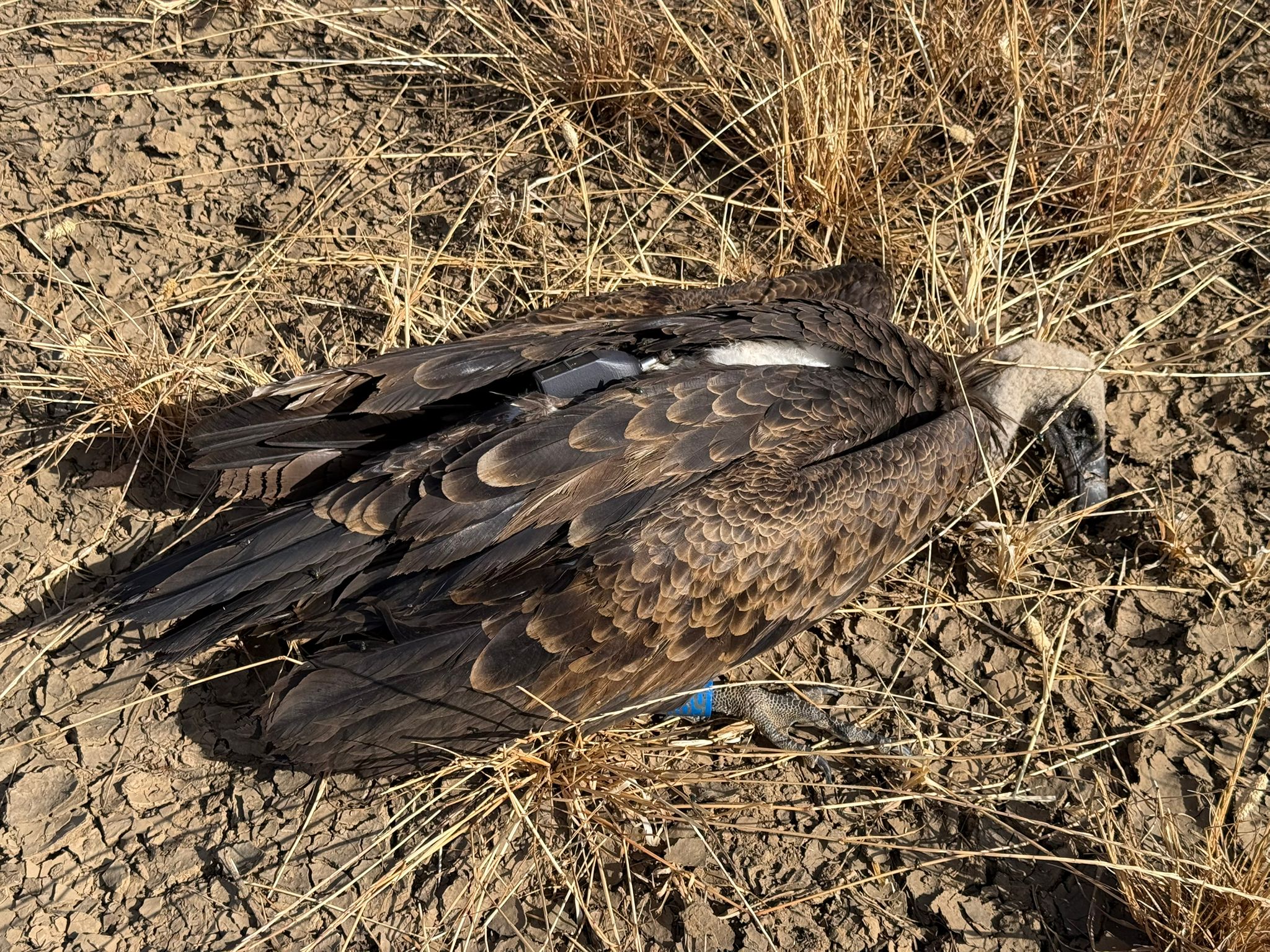
In 2021, the Egyptian Vulture population in the Canary Islands, exceeded 400 individuals, according to the LIFE Egyptian Vulture project. These optimistic results support the growing trend observed for the species in these islands over the past years.
Monitoring the Egyptian Vulture in the Canary islands
A working group carries out the monitoring activities of the Egyptian Vulture, locally known as ‘guirre’, in the Canary Islands. This group consists of Estación Biológica de Doñana-CSIC, directed by Doctor José Antonio Donázar, in coordination with the Directorate-General for Ecological Transition, Fight against Climate Change and Territorial Planning of the Gobierno de Canarias.
The fieldwork carried out by the researchers is demanding and complex, and it involves the Egyptian Vulture census, the monitoring of reproduction, and the use of roosts and supplementary feeding stations. It is an enormous effort, but an essential one in order to have the in-depth knowledge needed to assess the conservation status of the population and identify any critical issues.
Marking individuals is also necessary to effectively monitor the situation. Around 90% of Egyptian Vultures living on Fuerteventura and Lanzarote are marked with PVC and/or metal rings, making them identifiable. In fact, as many as 352 Egyptian Vultures have a PVC ring, which is the most easily read from a distance. In addition, 64 vultures are equipped with GPS/GSM transmitters, enabling the research team to monitor their movements and behaviour (20 have been installed in 2021).
The population and reproduction of the Egyptian Vulture in the Canary Islands
In 2021, the Egyptian Vulture population of the Canary Islands reached 402 individuals, whereas, in 2019, the team registered 361 individuals. Therefore, in the last three breeding seasons, the population saw an increase of over 11%, signifying the growth observed in recent years.
Furthermore, in 2021, the guirre population consisted of 191 breeding adults (171 on Fuerteventura and 20 on Lanzarote and the islets of Alegranza and Montaña Clara) and 211 non-breeding vultures. In the same year, the monitoring efforts identified 90 breeding territories, the majority of which (81) were located on Fuerteventura, seven on Lanzarote and one on each of the Alegranza and Montaña Clara islets. Compared to 2020, there has been an increase of seven territories. This positive trend is even more significant considering that in 1998, when the accurate and consistent population census began, there were only 21 territories surveyed. It is also important to note that in Lanzarote, where population growth is slower than in Fuerteventura, the team identified three new territories in the last two years. Additionally, 49 young Egyptian Vultures fledged in 2021, 43 in Fuerteventura and 6 in Lanzarote and neighbouring islets. The project ringed 41 of these young, and also captured and marked 46 adults the same year.
However, despite the increase in the population, the reproductive parameters show a strong irregularity and an apparent downward trend, even if the values for 2021 are better than the two previous years. In 2021, a breeding success (number of young per pair) of 0.53% was recorded, which is quite low for the species. Unfortunately, some nests fail every year, and this may be due to anthropogenic disturbance, but many other factors may also play a role, which requires further investigation.
Important observations and threats for the species
The team made many observations at the two active feeding stations on Fuerteventura and the one on Lanzarote. In the Tiscamanita (Fuerteventura) mill, they counted a record of a maximum of 186 individuals on the same day.
The Estación Biológica de Doñana-CSIC team also conducted 241 monitoring visits to the roosts frequented by the Egyptian Vultures, which are near power lines that cross Fuerteventura and Lanzatore. Worryingly, the largest group of Egyptian Vultures, consisting of 40 individuals, was observed on a power line in Fuerteventura on 15 July 2021.
Regarding mortality cases, between October 2020 and October 2021, four vultures died, one due to an impact with a wind turbine and three for unknown causes.
Egyptian Vulture conservation in the Canary Islands
The Egyptian Vulture was widespread across the archipelago in the early 20th century, but its numbers drastically declined, and in 1998 only about 21 breeding pairs remained at Fuerteventura. Thanks to targeted conservation actions ever since, the population of the Canarian Egyptian Vulture (Neophron percnopterus majorensis), one of the most endangered raptors in Europe, is recovering.
In 1998, an intensive long-term monitoring programme detected the main threats the species was facing. These include human activities such as collisions with power lines and illegal poisoning. Between 2004 to 2008, a LIFE conservation project carried out education campaigns to help minimize illegal poisoning and advocated for the modification of power lines to reduce the risk of collision to mitigate these threats. Conservationists have been monitoring the species for the last 20 years, and their analysis indicated that since the project, the survival of Egyptian Vultures has increased, especially for adult and subadult birds. Also, the population almost quadrupled between 1998 and 2018, from 21 to 74 breeding pairs living in Fuerteventura, Lanzarote and Alegranza according to SEO BirdLife’s national Egyptian Vulture census 2018. The latest LIFE project, LIFE Egyptian Vulture, currently works to improve the conservation status of the Egyptian Vulture in the Canary Islands by implementing measures to mitigate threats affecting the species, and also direct actions to promote its demographic recovery and expansion.

Source: LIFE Egyptian Vulture project



